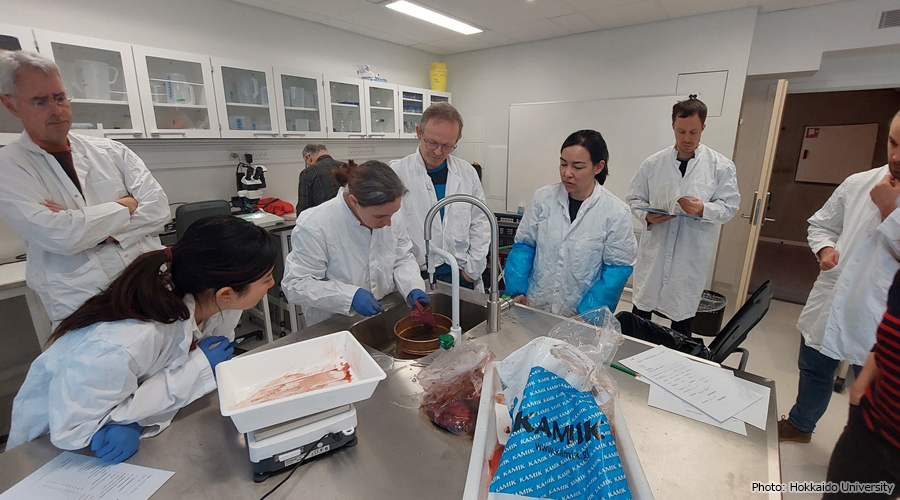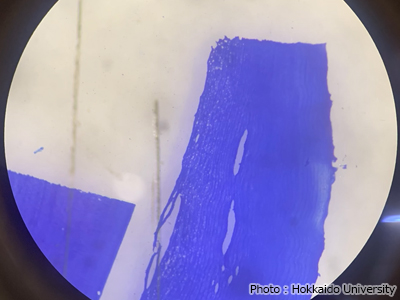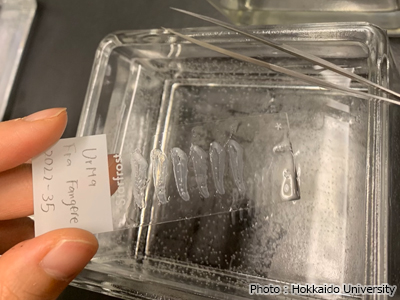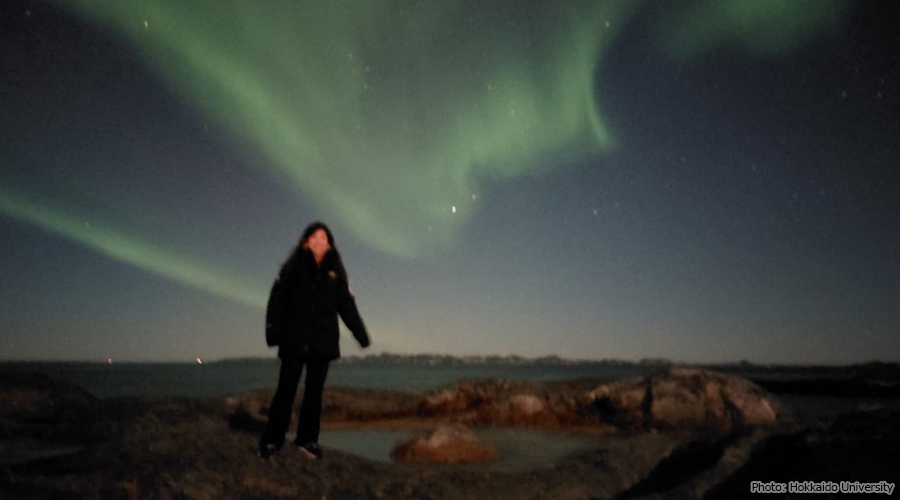Visiting Greenland Institute of Natural Resources to learn analysis methods
Overseas Fellowship Program Participant: FY2022 First Call Short-Term Program
Monica Ogawa (Hokkaido University)
In this program, I visited Greenland Institute of Natural Resources (GINR) for one month to learn analysis method of stomach contents and age estimation of seals. I also analyzed my seal samples which I collected in Qaanaaq, Greenland in August 2022. GINR is a research institute conducting a wide range of research on the terrestrial and marine ecosystem of Greenland.
First, I learned how to analyze stomach contents by participating in a workshop held at GINR. This time, we used the stomach of ringed seal collected south part of Greenland, which is my research target species (Fig. 1). It was interesting to see the individuality of eating habitats, some ate a large amount of plankton, while others ate a lot of caplin. From samples that I collected from north part of Greenland, we found a lot of polar cod, not caplin, so we could see that there is a difference in diet between northern and southern seals.

Age estimation analysis was done by thinly sliced canine teeth that have been softened with chemicals. After slicing teeth, we stained them to count the layers that look like annual rings of trees (Fig. 2). This individual was 44 years old!! Not only seals, but also most other mammals’ canine teeth can be used for age estimation. It was very difficult to arrange the thinly sliced canine teeth on the glass slide … (Fig. 3).


It was very enjoyable time to interact with the researchers in GINR, discussing about each other’s research topic, not only during the analysis, but also after school or during having lunch. I visited Greenland in the winter, November to December, so I could see many beautiful northern lights at night (Fig. 4).

It was such a great experience to conduct analysis overseas with local scientists. I will make full use of this experience in my future research!!
